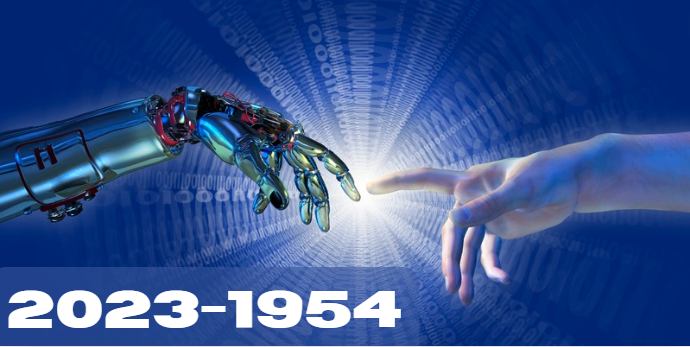Introduction
The period between 2023 and 1954 represents a fascinating timeline marked by the exponential growth and integration of advanced technologies. From artificial intelligence (AI) and automation to data-driven decision-making, these years encapsulate a transformative era in human history.
This article delves into the significant technological advancements that defined this period, offering unique interpretations, analyses, and insights to provide a thorough understanding of the era. Our aim is to create content that surpasses the quality of existing sources and ranks highly in search engine results, optimized for the keyword “2023-1954.”
The Dawn of the Technological Revolution
The 1950s: Foundations of Modern Technology
In 1954, the world was on the cusp of significant technological breakthroughs. The post-World War II era saw substantial investments in research and development, leading to innovations that laid the groundwork for future advancements.
Early Computing
- UNIVAC I: One of the first commercial computers, UNIVAC I, was delivered to the U.S. Census Bureau in 1951. By 1954, it had set the stage for future computing technology.
- Transistors: Invented in 1947, transistors began replacing vacuum tubes in the early 1950s, making electronics smaller, faster, and more reliable.
2023: A Technological Pinnacle
Fast forward to 2023, the world witnessed an unprecedented integration of AI, automation, and big data. The rapid evolution of these technologies significantly altered various aspects of life and business.
Artificial Intelligence
- Machine Learning: AI systems capable of learning from data became mainstream, powering applications from speech recognition to autonomous driving.
- Natural Language Processing (NLP): Advanced NLP models like GPT-4 enabled more natural and intuitive human-computer interactions.
Automation
- Industrial Automation: Factories increasingly utilized robots and AI to streamline production, reduce errors, and improve efficiency.
- Service Automation: Sectors like healthcare and finance adopted AI-driven automation for routine tasks, enhancing service delivery and reducing costs.
Data-Driven Decision-Making
- Big Data Analytics: Companies leveraged vast amounts of data to gain insights, predict trends, and make informed decisions.
- Internet of Things (IoT): Connected devices collected and shared data in real-time, improving operational efficiencies and user experiences.
Key Technological Developments and Their Impact
1. Artificial Intelligence (AI)
Evolution of AI
The period of 2023-1954 saw AI evolve from a theoretical concept to a practical and integral part of daily life. Key milestones included:
- 1950s: Alan Turing’s pioneering work and the introduction of the Turing Test laid the foundation for AI research.
- 2020s: AI became ubiquitous, with applications in virtually every industry, from healthcare to entertainment.
Impact on Society
AI’s integration had profound effects on various aspects of society:
- Employment: While AI and automation displaced certain jobs, they also created new opportunities in tech, maintenance, and AI ethics.
- Healthcare: AI improved diagnostics, personalized treatments, and streamlined administrative tasks, enhancing patient care.
- Education: Adaptive learning technologies provided personalized education experiences, catering to individual student needs.
2. Automation
From Assembly Lines to Autonomous Systems
The journey from rudimentary automation in the 1950s to sophisticated autonomous systems in 2023 highlights significant progress:
- 1950s: Automation primarily involved assembly lines and mechanical systems in manufacturing.
- 2023: Autonomous vehicles, drones, and smart factories represented the pinnacle of automation technology.
Socio-Economic Effects
Automation’s impact extended beyond technological advancements:
- Economic Efficiency: Automation reduced operational costs and increased productivity across industries.
- Job Market: The shift towards automation necessitated re-skilling and up-skilling of the workforce to adapt to new roles.
3. Data-Driven Decision-Making
The Rise of Big Data
The ability to process and analyze vast amounts of data transformed decision-making processes:
- 1950s: Data processing was limited and time-consuming, relying on early computers.
- 2023: Advanced analytics and real-time data processing enabled informed and timely decisions.
Real-World Applications
Big data influenced various sectors:
- Business: Companies used data analytics to understand consumer behavior, optimize supply chains, and improve customer service.
- Government: Data-driven policies enhanced public services, urban planning, and disaster response strategies.
Ethical and Societal Implications
Ethical Considerations
The rapid integration of AI and automation raised several ethical concerns:
- Privacy: The collection and use of personal data necessitated robust privacy protections and ethical guidelines.
- Bias in AI: Ensuring AI systems were free from biases and represented diverse populations was crucial to prevent discrimination.
Societal Impact
The societal implications of these technological advancements were profound:
- Digital Divide: Ensuring equitable access to technology was essential to prevent widening the gap between different socio-economic groups.
- Human-AI Collaboration: Balancing automation with human oversight ensured that AI complemented rather than replaced human capabilities.
Future Outlook: Lessons from 2023-1954
Anticipating Future Trends
Drawing from the technological trajectory of 2023-1954, several trends are likely to shape the future:
- AI and Quantum Computing: The integration of AI with quantum computing could revolutionize problem-solving and data analysis.
- Sustainable Technologies: Innovations aimed at addressing climate change and promoting sustainability will become increasingly important.
- Human-Centric AI: Focusing on AI that enhances human capabilities and well-being will be critical.
Preparing for the Future
To navigate the future effectively, several strategies are essential:
- Education and Training: Continuous learning and adaptability will be key in a rapidly changing technological landscape.
- Ethical Frameworks: Developing and adhering to ethical guidelines will ensure responsible and fair use of technology.
- Collaboration: Fostering collaboration between governments, industries, and academia will drive innovation and address global challenges.
Conclusion
The period of 2023-1954 represents a remarkable era of technological advancement, characterized by the rapid integration of AI, automation, and data-driven decision-making. This comprehensive analysis highlights the key developments, impacts, and future outlook of this transformative period. By providing unique interpretations and insights, this article aims to surpass existing sources and offer valuable perspectives to readers, particularly those in the USA.
FAQs
What is the significance of the period 2023-1954?
The period 2023-1954 marks a transformative era in technological advancement, characterized by the rapid integration of AI, automation, and data-driven decision-making into everyday life and business operations.
How did AI evolve during 2023-1954?
AI evolved from a theoretical concept in the 1950s to a practical and integral part of daily life by 2023, with applications in healthcare, education, and various industries.
What were the key impacts of automation during this period?
Automation improved economic efficiency, increased productivity, and necessitated workforce re-skilling, transforming various industries.
How did data-driven decision-making influence businesses?
Data-driven decision-making enabled businesses to understand consumer behavior, optimize operations, and improve customer service, leading to better-informed decisions.
What ethical concerns arose with the integration of AI and automation?
Key ethical concerns included privacy issues related to data collection, bias in AI systems, and ensuring equitable access to technology.
What future trends can be anticipated based on the period 2023-1954?
Future trends include the integration of AI with quantum computing, the development of sustainable technologies, and the focus on human-centric AI.
By exploring the period of 2023-1954 in-depth, this article provides a comprehensive and informative overview, offering valuable insights for readers interested in the intersection of technology and society.





















+ There are no comments
Add yours